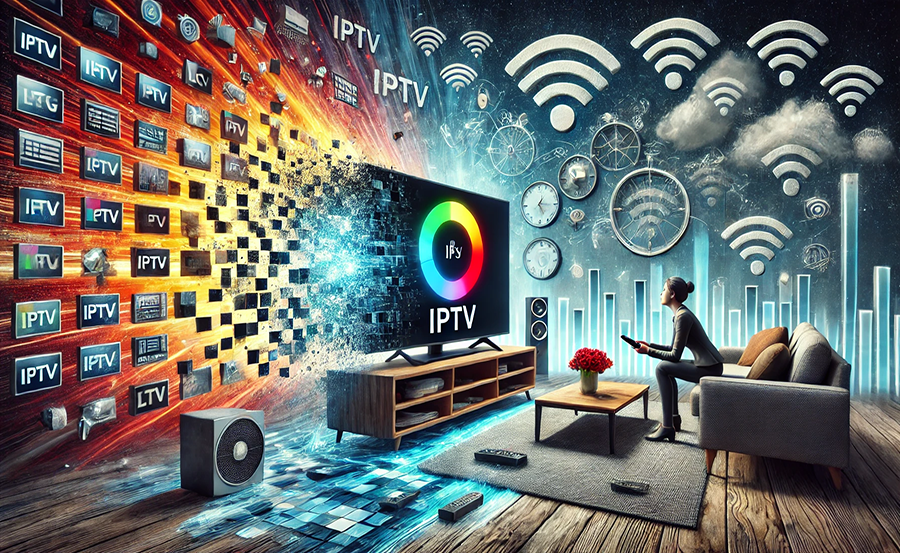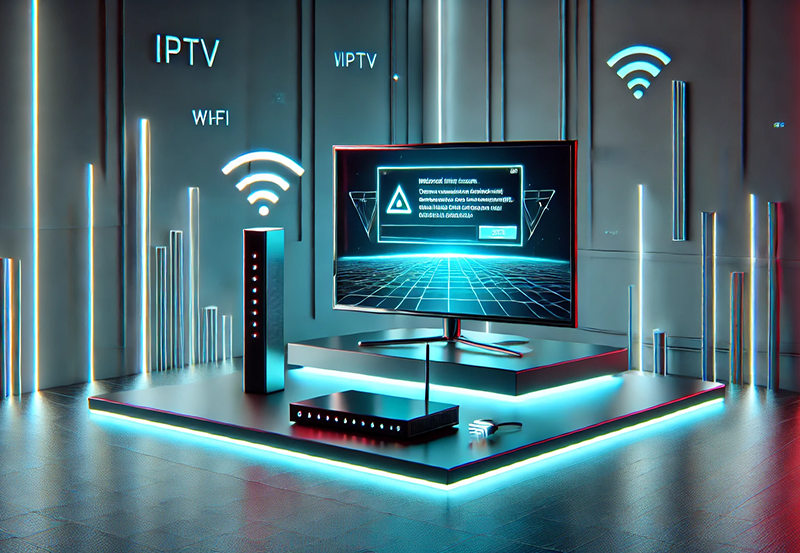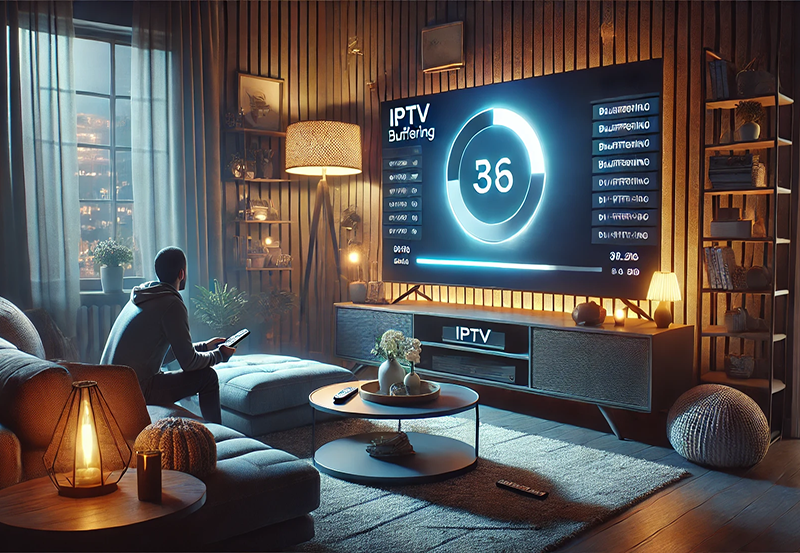Optimizing Your Wi-Fi for IPTV Streaming: Maximize Your Streaming Delight
In today’s digital age, high-quality streaming is a game-changer. Whether it’s catching up with the latest series or watching live events, IPTV (Internet Protocol Television) offers an amazing opportunity to enhance your viewing experience. Yet, even the best IPTV service for Firestick can falter if your Wi-Fi isn’t up to the task. In this guide, we’ll explore the top ten methods to optimize your Wi-Fi for IPTV streaming, ensuring seamless entertainment at your fingertips.
Understanding Your Current Wi-Fi Setup
Before diving into optimization, it’s vital to understand your existing Wi-Fi setup. Your router, placement, and configuration can profoundly impact streaming quality. Knowing the strengths and weaknesses of your current setup allows you to make informed decisions.
Most users overlook one crucial factor: the router’s positioning. Placement plays an essential role in signal distribution. Is your router tucked away in a corner? Ideally, it should be centralized, free from obstacles like walls and electronic devices.
Equally important is understanding your bandwidth needs. IPTV streaming tends to require more data than casual browsing, especially if you’re subscribed to HD or UHD IPTV subscription plans. Reviewing your current plan against your streaming demands might be the key difference in performance.
Evaluating Signal Strength
Have you ever wondered why your IPTV playback buffers at peak hours? It might be linked to fluctuating signal strength. Using tools like Wi-Fi analyzers can help measure signal intensity throughout your home, identifying weak spots. Buy 1 Year IPTV Subscription and Enjoy Unlimited Content
For optimal results, aim for a signal strength of at least -70 dBm near your streaming device. Anything above this benchmark ensures stable connectivity, minimizing interruptions during your streaming sessions.
Surprisingly, the layout of furniture and even radio interference can significantly affect signal strength. Consider these aspects when evaluating your Wi-Fi performance. It helps to keep probing and asking simple questions like, “Why is this room failing to connect efficiently?”
Router Configuration Tweaks
Have you tweaked your router settings lately? Many users neglect this, yet configuring it properly can substantially enhance streaming quality. Begin by ensuring that your router operates on the optimal frequency band.
Choosing Between 2.4GHz and 5GHz Bands
Typically, routers offer dual-band options: 2.4GHz and 5GHz. The 2.4GHz band boasts a broader range but is often crowded, especially in densely populated areas. Meanwhile, 5GHz offers faster data rates, essential for flawless streaming.
Consider your environment: If interference from other devices and networks is an issue, experiment with the 5GHz band. It might answer the perennial question, “Why does my IPTV service for Firestick falter during critical moments?”
Versions of routers offering tri-band or advanced multi-user MIMO (MU-MIMO) technology could be worth exploring. These models are tailored for homes with multiple users, boosting simultaneous data streams.
Optimizing Channel Settings
Another nifty tweak is channel selection. Routers operate on various channels, and congested ones can negatively impact performance. Most routers default to the same channel, causing overlap. Log into your router settings and switch to a less crowded channel for potential improvement.
Tools like Wi-Fi analyzer apps on your smartphone can aid in selecting a less congested channel. This simple step could significantly reduce buffering during high-definition IPTV sessions.
Enhancing Router Capability
Sometimes, a simple tweak isn’t enough. Outdated hardware can throttle streaming performance no matter how much you tinker. When was the last time you considered upgrading your equipment?
Investing in a Quality Router
Believe it or not, routers have evolved significantly. If you’re still using a model from several years ago, it might be time for an upgrade. Modern routers incorporate advanced features designed specifically to manage high-demand data traffic like streaming.
When choosing a router, consider aspects such as the number of supported devices, frequency bands, and supported speed. Newer models often support the latest Wi-Fi standards like Wi-Fi 6, offering better handling of simultaneous connections, ideal for those with multiple IPTV subscription plans.
Implementing a Network Extender
Not every home is configured to be Wi-Fi-friendly. Square footage, construction material, and layout can pose challenges. Here’s where a network extender might come in handy. By amplifying signals, these devices can help reach those notorious Wi-Fi dead zones.
Placement is key: Position extenders halfway between your router and the problem area to ensure the best coverage. They aren’t just plug-and-play devices. They require thoughtful placement and configuration.
Simultaneous Device Management
The presence of numerous connected devices will undoubtedly compromise IPTV streaming quality. Establishing a proper device management protocol allows the prioritization of streaming activities.
Bandwidth Prioritization
Utilize Quality of Service (QoS) settings on your router to prioritize streaming traffic. This allows your IPTV demands, particularly those for IPTV services on the Firestick platform, to receive preference in bandwidth allocation.
A couple of clicks in your router’s administrative panel could significantly bolster streaming reliability, even during peak household usage.
Limiting Background Activities
Check for background applications on devices that could be consuming bandwidth. Automatic updates or synchronized media uploads often consume valuable network resources inadvertently. Be proactive about managing these tasks to free up bandwidth for streaming.
Regular Maintenance and Monitoring
Regular maintenance ensures the longevity of your network’s performance. Conceptually simple actions like frequent rebooting, firmware updates, and monitoring can prevent potential issues.
Updating Router Firmware
Router manufacturers frequently release firmware updates to enhance performance, fix bugs, and improve security. Left unchecked, an outdated router risks exposure to vulnerabilities and inadequate performance.
Dive into your router settings occasionally to check for and install firmware updates. This simple action can maximize your streaming delight through enhancement of router capabilities.
Routine Router Reboots
Electronic devices, routers included, benefit from routine reboots. A periodic restart can mitigate performance issues caused by memory leaks or software glitches.
Consider scheduling automatic reboots during off-peak hours to avoid service interruptions while contributing to network reliability.
Exploring Wired Connections
Sometimes, the best Wi-Fi solutions aren’t wireless at all. Explore the potential of wired connections for a consistent streaming experience.
Ethernet as Alternative
Connecting your streaming device directly to the router via Ethernet guarantees stable and uninterrupted service. Ethernet cables maintain consistent speeds and lower latency, essential for smooth IPTV playback.
Evaluate the logistics of incorporating Ethernet connections within your home setup, as it might drastically reduce buffering and lag associated with Wi-Fi.
A Creative Journey to Optimal Streaming
The endeavor to optimize your Wi-Fi for IPTV streaming isn’t a one-size-fits-all solution. It chastises a one-time fix mentality. Rather, consider it a personalized odyssey to discover solutions that cater to your unique circumstances.
Patience, perseverance, and periodic evaluation of your setup are paramount. Embrace the imperfections and lessons spotted along the way as sources of growth towards maximizing your streaming delight.
Frequently Asked Questions

What is the best frequency band for IPTV streaming?For IPTV streaming, the 5GHz band is generally preferable due to its faster speeds, despite having a shorter range compared to 2.4GHz. This band is less congested, leading to fewer interferences and providing optimal streaming conditions.
How can I prioritize my IPTV service on my network?You can prioritize IPTV service by using Quality of Service (QoS) settings available in modern routers. This allows you to assign a higher data priority to streaming activities over other types of network traffic.
Will upgrading to a Wi-Fi 6 router enhance my streaming experience?Absolutely, a Wi-Fi 6 router can significantly enhance streaming quality. It offers improved speeds, increased capacity, and better performance in crowded networks, making it a worthy upgrade for IPTV streaming.
Should I use a network extender or a mesh Wi-Fi system?Both options extend coverage but serve different needs. Network extenders are cost-effective for smaller areas with a few dead zones, whereas mesh systems offer seamless, full-home coverage at the cost of a higher investment.
The Impact of Network Interference on IPTV Streaming: How to Fix It





